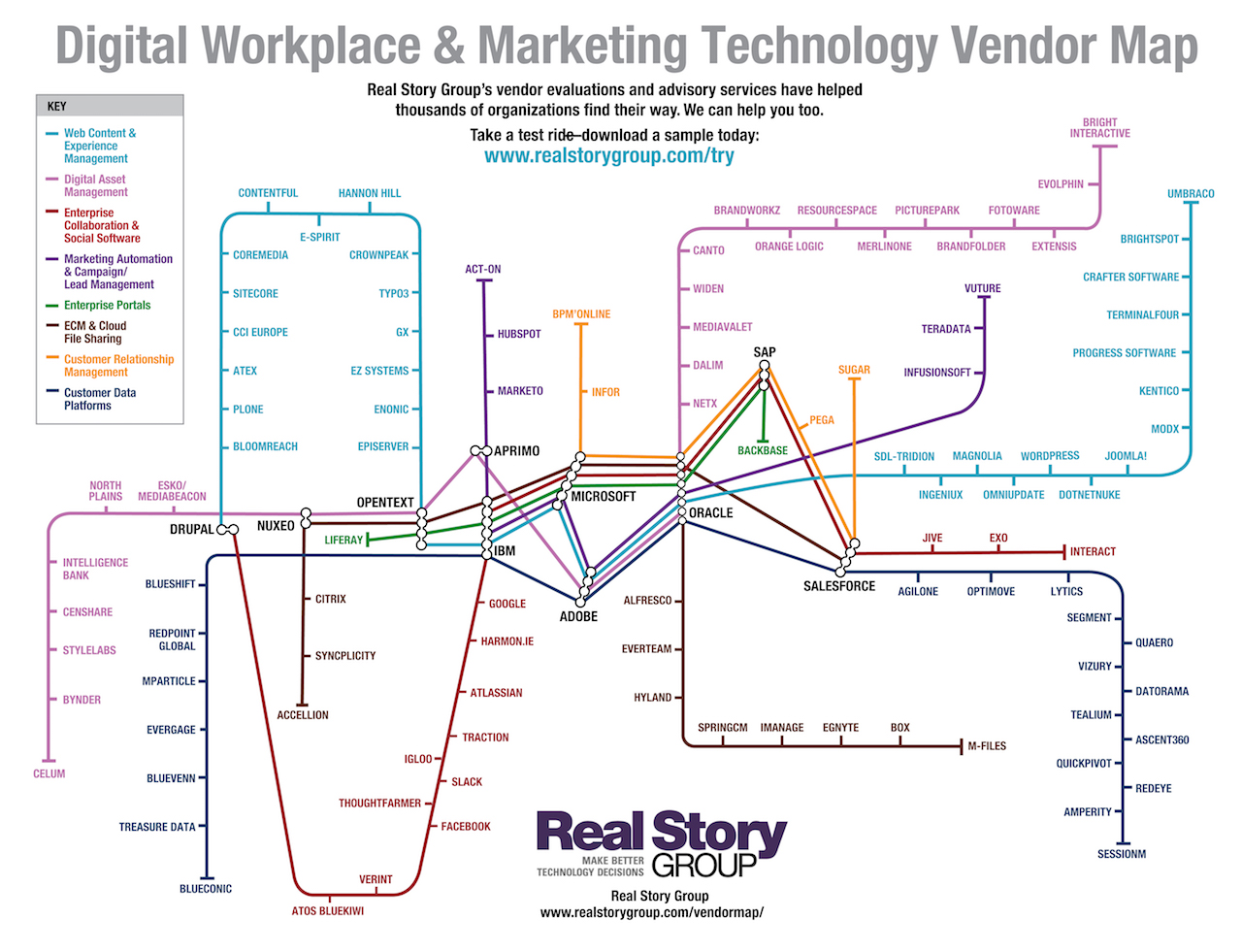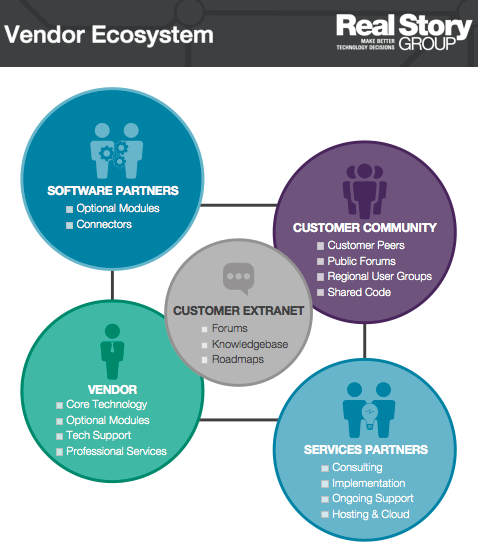Death of the Intranet
Intranets are dead. Long live the Digital Workplace!
OK, this is partly an argument about labels, but labels matter. What most employees understand as their "intranet" -- updates from corporate communications, some HR forms, and a mountain of outdated docs -- is increasingly irrelevant.
The issue here is not that traditional intranet services have somehow lost value. Rather, it's that business units are moving on. They don't want to be "lured" to your vision of an intranet. They want some fairly specific services. From what I can see, there is a confluence of factors here:
Applications over platforms
Platforms are good for the kind of long-term planning and prep where IT excels. Unfortunately, platforms are less amenable to delivering short-term benefits to business units. Put another way, your colleagues don't need "SharePoint." They want a contracts management system, or a project scheduling utility, or any one of thousands of practical business services.
Ability to self-provision and employ SaaS-based solutions
This can be a tough one to swallow at an enterprise level, and you'll want to keep some controls in place. Yet, you also need to get ahead of practical business needs by offering some real alternatives, or your business colleagues will simply use their credit cards to buy what they need in the cloud.
Rise of Portal Lite
Rather than a big, heavy, developer-intensive enterprise portal, business units are increasingly seeking simpler forms of integration: basic dashboards / health meters, simple mash-ups, activity stream aggregation, and so on. And they want these services available ubiquitously, and not just in a corporate-wide portal. The good news is that some vendors are adapting. Are you?
Emphasis on collaboration and social
If you've spent the past three recessionary years trying to automate processes to cut costs, you're only getting half the picture. Sales, Marketing, R&D, Product Development, and other revenue-generating units want to be more agile, more innovative, and work more closely across silos. It takes much more than technology to do that successfully, but the right collaboration/social toolset is a key part of the overall solution here. When intranet teams deliver the wrong tools or approach, business units take matters into their own hands.
Blurring lines between enterprise applications and enterprise information
Employees don't want services bereft of supporting content; nor do they want content delivered in a way that's not immediately actionable. The sharp divide between applications and documents on most intranets is becoming anachronistic. Savvy intranet managers are focusing on content-enriched applications.
The rise of mobile is really pushing this. Even the simplest static intranet "websites" make more sense as applications on mobile devices.
* * *
Let's not have a funeral. The death of the intranet heralds the re-birth of something better: a more practical set of tools that help people get their work done. Intranet managers should re-align with this new world and focus on services that businesspeople can use in the flow of their daily work. The digital workplace is actually less a specific place, but rather a mindset that creates services so badly needed that you'll never have to complain about "poor adoption" ever again.
That's hard, and you may skin your knees at first. Age-old challenges of security and interoperability can get tougher before they get better. Yet your colleagues are already looking way beyond your official intranet. It's worse to be irrelevant than to have experimented and failed. If we can help you, let us know...
* * *
P.S. This post was informed by some great chats at the recent KMWorld event with two of my favorite Digital Workplace gurus, Jane McConnell and Martin White.







